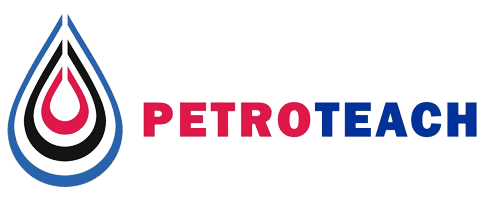RES 425
Steam-Solvent and Electromagnetic Heating Analysis and Design in Thermal Recovery



| Code | Date | Location | price (€)* |
|---|---|---|---|
| RES 425 | 19 - 20 Nov 2025 | Online | 850 |
| RES 425 | 15 - 16 Oct 2025 | Moscow | 1990 |
| RES 425 | 1 - 2 Jul 2025 | Online | 850 |
| RES 425 | 23 - 24 Jun 2025 | Amsterdam | 1990 |
* Prices are subject to VAT and local terms. Ph.D. students, groups (≥ 3 persons) and early bird registrants (8 weeks in advance) are entitled to a DISCOUNT!
PetroTeach offers a comprehensive course on understanding and design of new technologies of Solvent and Electromagnetic-Heating in thermal applications. There is ample opportunity to work problems in class. By the end of this course, participants will be able to analysis and interpret evaluations done by others on solvent and electromagnetic-heating.
This is a 2-day course designed to provide participants with a complete understanding of new technologies of Solvent and Electromagnetic-Heating in thermal applications. In this course a detailed analysis of low frequency electric resistive and ohmic heating (i.e., electrical heaters and electrodes) and high frequency electromagnetic heating inductive and RF-heating (i.e., transmit radio frequency energy into reservoir by antenna) is provided. The course is an introduction to Electromagnetic (EM) Heating techniques (low, medium and high frequency) and their applications in Thermal Recovery and discusses the physics controlling different EM-heating method and analytical/numerical methods to evaluate each technique. In this course there will be examples using Excel spreadsheets.
In the 1st-day of the course the thermodynamics and pressure-volume-temperature (PVT) and tuning parameters to fit laboratory data is described. Different analytical models for oil rate predictions such as Butler-Mokrys (1989) and Dunn-Nenniger-Rajan (1989) models will be discussed. On the 2nd-day of the course alternative methods of transferring heat to heavy oil reservoirs, based on electromagnetic energy will be discussed. On the 2nd-day of the course alternative methods of transferring heat to heavy oil reservoirs, based on electromagnetic energy will be discussed.
o Introduction to thermodynamics and pressure-volume-temperature (PVT)
o Explanation and examples of basic law such as: Clausius-Clapeyron Equation, Dalton’s law, Henry’s Law and Raoult’s
o Practical examples such as temperature reduction in chamber due to NCG injection, and temperature reduction at Azeotropic point in ES-SAGD process
o Lithophysical Properties of Rocks and Electrometric Models of Facies.
o Pure Solvent Modelling: VAPEX and Nsolv
o Butler-Mokrys and Dunn-Nenniger-Rajan models
o Onset of asphaltene precipitation
o Steam-Solvent Numerical and Analytical Modelling
o Gupta-Gittins (2012) and Rabiei– Harding–Abedi
o Production Challenges in Solvent operation: concept of liquid-pool model and concern with steam trap control for Nsolv
o Previous field tests and discussion of the outcomes
o Pros and Cons of Electrical Heaters (Ohmic Heating), Resistive heating and RF-heating.
o Review of Electric and Magnetic Fields.
o Dielectric Properties of Water (free vs. bound water)
o Electrical properties of Oil sand Material
o Heat Transfer in Thermal application including EM heat source
o Introduction to Antenna and power transmission
o Penetration Depth
o EM wave in Lossy Medium
o Development of Desiccation Zone
o Analytical models available to model different EM-heating techniques
o EM and thermal coupling simulation

Mazda Irani is the director of Ashaw Energy Ltd. He is currently engaged in the designing and optimization of Steam Assisted Gravity Drainage (SAGD) and proper near wellbore modeling for the SAGD wells. One of his main tasks is to help and develop a software that can help operators run their SAGD wells at optimum subcool, manage the hot spots, and modify their FCD design in heterogeneous reservoirs. He published a trilogy paper named “On Subcool Control in Steam-Assisted-Gravity-Drainage Producers”. Dr. Irani was previously employed in technical and supervisory roles with Cenovus Energy, Suncor Energy, RPS Energy, and C-FER Technologies. He has published and presented more than 40 technical papers on different aspects of SAGD operation. Dr. Irani holds a PhD in petroleum engineering (U of C 2017) and geomechanics (U of A 2012) and three Masters degrees in petroleum engineering, geotechnical engineering, and structural engineering.
Reservoir and production engineers, reservoir simulation engineers, technology development leaders that are involved in forecasting and evaluation of solvent and electromagnetic heating for thermal recovery development and design.
o Intermediate to Advance
After completing this course, participants will learn:
o Become familiar with fundamentals of phase behavior modeling
o Be able to carry out simple phase-equilibria calculations
o Assumptions made in solvent analytical models for oil rate prediction
o Understanding benefits and limitations of pure-solvent and steam-solvent processes
o Understanding different EM-heating techniques
o Understanding limitations of different EM-heating methods for different reservoirs.
o Assumptions made in analytical techniques used to model EM-heating methods
o Understanding how the Antenna deliver power to reservoir.
Registration is now OPEN!
* Prices are subject to VAT and local terms. Ph.D. students, groups (≥ 3 persons) and early bird registrants (8 weeks in advance) are entitled to a DISCOUNT!
For more details and registration please send email to: register@petro-teach.com
Would you like a PetroTeach training course delivered at a time or location to suit you?
click for request in house